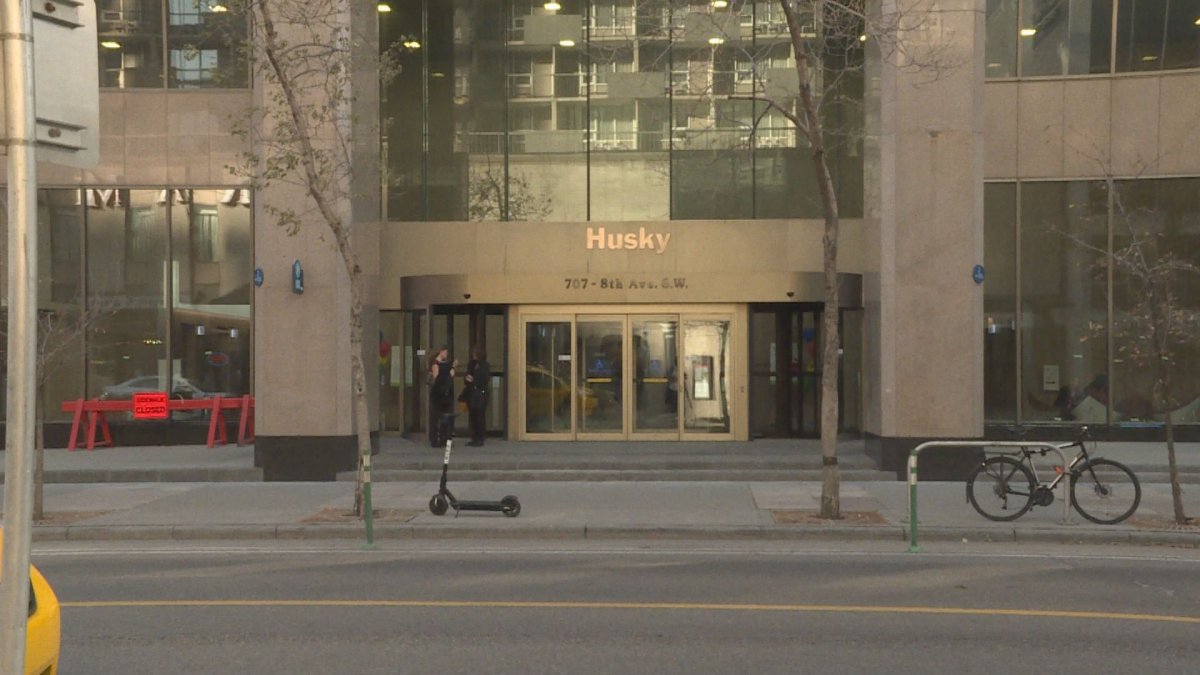The CEO of Calgary-based Husky Energy Inc. says social media speculation that layoffs put in place the morning after the federal election this week were in reaction to political events are just “B.S.”

The cuts were simply designed to align the workforce with lower capital spending plans going forward, Rob Peabody said on a conference call Thursday to discuss third-quarter financial results.
“Eventually, when you spend less, you need less people to spend that money efficiently and so that what these job cuts were about,” he said in response to a question.
Peabody refused to say how many employees were laid off, despite news reports quoting staff who said it was in the “hundreds.” He said the company will account for severance payments in the fourth quarter.
In a regulatory filing earlier this year, the company indicated it had over 5,100 permanent employees at the end of 2018, little changed from 2016 and 2017.
The provincial New Democrats cited the layoffs this week in criticizing corporate income tax reductions enacted by the United Conservative government after it was elected last spring. The cuts resulted in Husky declaring a one-time $233-million gain in its second-quarter results.
But while Peabody said he welcomes the tax cut and thinks it’s good policy, he said the reason the company doesn’t plan to invest as much in Alberta is because of the continuation by the United Conservatives of the NDP program to curtail oil production.
“We would love to spend more money in Alberta but, unfortunately, in Alberta … there are quotas in place that mean we could spend to develop crude oil but then they wouldn’t let us sell it. So that doesn’t make any sense, either,” he said.
Husky is continuing to invest in Saskatchewan, however, Peabody said, noting it recently started up a 10,000-barrel-a-day thermal heavy oil project and has five other similar projects in development.
He added spending is continuing in the United States, where permits have been obtained to rebuild the Superior, Wis., oil refinery partly destroyed in a fire in April 2018, and on the East Coast of Canada, where its West White Rose offshore project is headed for a 2022 startup.
At its investor day last spring, Husky said it would slash its average budget by $350 million to $3.15 billion per year over the next five years, accomplishing that in part by cutting costs while still growing production by 100,000 barrels per day by 2023.
On Thursday, Husky said it is continuing to evaluate the sale of its retail operations after agreeing to sell its small Prince George, B.C., refinery to Calgary-based Tidewater Midstream and Infrastructure Ltd. earlier this month.
Husky shares fell by as much as 7.8 per cent to $8.76 in trading on the Toronto Stock Exchange on Thursday, despite meeting analyst expectations on financial and operating results. A year ago, it was trading at almost $20 per share.
Husky Energy Inc. says it earned $273 million in its latest quarter, down from $545 million in the same quarter last year.
The company controlled by Hong Kong billionaire Li Ka-Shing says the profit amounted to 26 cents per share for the three months ending Sept. 30 compared with a profit of 53 cents per share a year ago.
Revenue totalled $5.31 billion, down from $6.16 billion.
Upstream production averaged 294,800 barrels of oil equivalent per day, compared with 296,700 in the third quarter of 2018. The average realized price was $47.54 per barrel of oil equivalent, down from $50.44 a year earlier.
Upgrader and refinery throughput was 356,400 barrels per day in the quarter, up from 350,600 in the same period in 2018.
Husky confirmed earlier this week that it was laying off staff as a result of steps taken to align its workforce with its capital plan and strategy, but did not say how many people it was cutting.



Comments